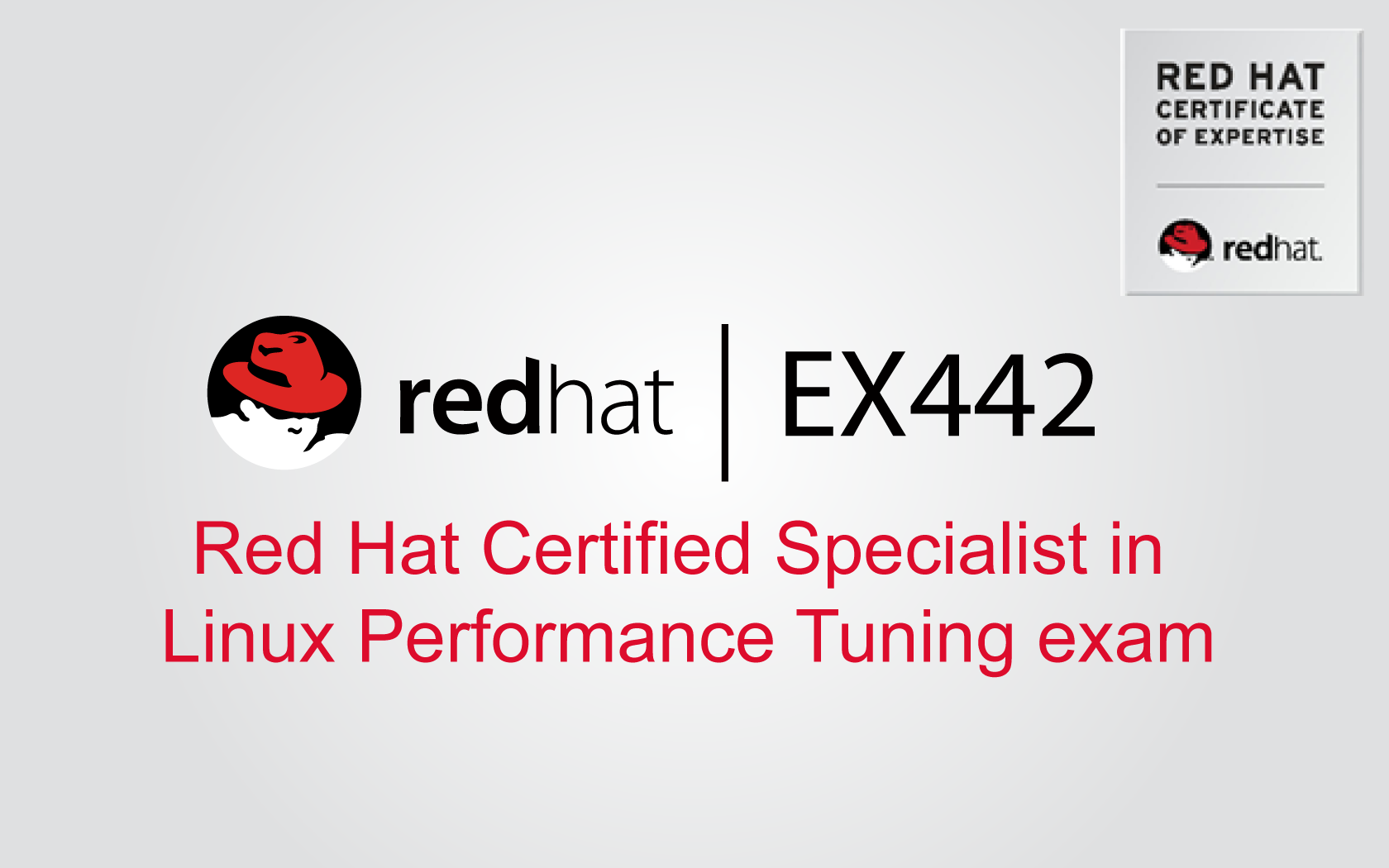- Home
- Infos Certification

EX442 - Red Hat Certified Specialist in Linux Performance Tuning
Red Hat recommends that candidates become a Red Hat Certified System Administrator (RHCSA) or Red Hat Certified Engineer (RHCE) before attempting this exam but neither is required.
Duration: 4h
COURSE PROGRAM
This exam tests candidates' ability to use standard system tools to analyze the performance of Red Hat® Enterprise Linux® and its applications. It also tests the ability to use standard system tools and mechanisms to modify the behavior of the system and applications to improve performance. This exam is based on Red Hat Enterprise Linux 7.
- Experienced Linux system administrators responsible for maximizing resource utilization through performance tuning
- An RHCE interested in becoming a Red Hat Certified Architect (RHCA)
- Be a RHCSA or have comparable work experience and skills (RHCE would be even better).
- Have taken the Red Hat Enterprise Performance Tuning (RH442) course or have extensive work experience in performance tuning.
- Review the Red Hat Certified Specialist in Linux Performance Tuning exam (EX442) objectives.
- Red Hat Enterprise Performance Tuning with exam (RH443)
- Red Hat Enterprise Performance Tuning (RH442)
To help you prepare, the exam objectives highlight the task areas you can expect to see covered in the exam. Red Hat reserves the right to add, modify, and remove exam objectives. Such changes will be made public in advance.
Candidates should be able to perform the tasks listed below:
- Use utilities such as vmstat, iostat, mpstat, sar, gnome-system-monitor, top, powertop and others to analyze and report system and application behavior
- Configure systems to provide performance metrics using utilities such as Performance Co-Pilot (PCP)
- Use the Pluggable Authentication Modules (PAM) mechanism to implement restrictions on critical system resources
- Use /proc/sys, sysctl and /sys to examine and modify and set kernel run-time parameters
- Use utilities such as dmesg, dmidecode, x86info, sosreport etc. to profile system hardware configurations
- Analyze system and application behavior using tools such as ps, strace, top and Valgrind
- Configure systems to run SystemTap scripts
- Alter process priorities of both new and existing processes
- Configure systems to support alternate page sizes for applications that use large amounts of memory
- Given multiple versions of applications that perform the same or similar tasks, choose which version of the application to run on a system based on its observed performance characteristics
- Configure disk subsystems for optimal performance using mechanisms such as swap partition placement, I/O scheduling algorithm selection, file system layout and others
- Configure kernel behavior by altering module parameters
- Calculate network buffer sizes based on known quantities such as bandwidth and round-trip time and set system buffer sizes based on those calculations
- Select and configure tuned profiles.
- Manage system resource usage using control groups
